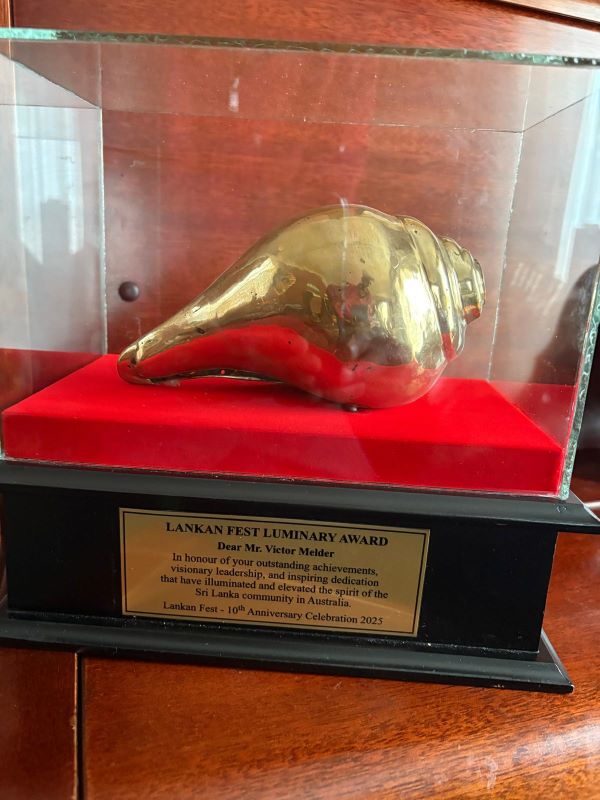New Findings for Alzheimer’s are Identified-by Dr Harold Gunatillake

Lead study author Dr John Mamo, Ph.D.- research work at Curtin University, Perth, Australia
Alzheimer’s disease is a type of Dementia and is a progressive neurological disorder that causes to shrink the brain with age and gradual death of brain cells.
One of the proteins involved is called amyloid, deposits which form like plaques around these brain cells. The other protein is called tau, deposits of which form tangles within the brain cells.
Age is the biggest risk factor, and today people live longer and the risk of getting Alzheimer’s is much higher
It mainly affects people over 65, and every five years the risk of developing Alzheimer’s disease doubles. One in six people over 80 gets dementia- many of them have Alzheimer’s disease.
As brain cells become affected, there is a decrease in chemical messengers called neurotransmitters involved in sending messages, or signals, between brain cells.
New studies as described in Medical News Today reported that scientists have a better understanding how and why Alzheimer’s disease develops in some people.
New research suggests that a leaky blood brain barrier may be the culprit, and as a result may lead to new treatments for a condition that affects many old people round the world.
What is blood brain barrier?
This is a barrier between brain blood vessels and the brain cells and other components that make up brain tissue. It is also called the “endothelial tight junction” where the endothelial cells of the inner lining of the blood vessels that are so tightly closed together.
This tight gap allows only small molecules, fat soluble molecules and some gases to pass freely through the endothelial lining of the blood vessels into the brain tissue.
This barrier is to protect against circulating toxins or germs that could cause brain infection, at the same time allowing vital nutrients to reach the brain.
The known factors for Alzheimer’s disease are age, family history, diet, and environmental factors. But now the scientists in Australia have recently discovered additional factor that may be responsible for this neurodegenerative condition.
Using mouse models, researchers in Australia have identified one of the likely causes of Alzheimer’s disease. Some have dubbed the finding a “breakthrough.”
Researchers found that toxin fat-protein complexes interfered with the linings of the tiny blood vessels in the brains of mice, leaving them prone to leaks. These toxic complexes were able to cross the blood-brain barrier, resulting in inflammation and loss of neurons in the brain.
Toxic fat is visceral fat. This is the fat hanging around your organs in the abdominal cavity, including the heart, liver, and pancreas.
This visceral fat is a large risk factor for type 2 diabetes, heart attacks, stroke, non- alcoholic fatty livers, kidney stones and even cancer.
So, it is advisable to go on strict diets and reduce your general weight, also will reduce to visceral fat.
Visceral fat secretes chemicals called adipokines, which can cause insulin resistance in the liver and in the muscles throughout the body.
“This study,” by Dr John Mamo said, “shows that exaggerated abundance in blood of potentially toxic fat-protein complexes can damage microscopic brain blood vessels called capillaries and, thereafter, leak into the brain, causing inflammation and brain cell death.”
Now what are toxic proteins?
Abnormal deposits of the protein amyloid beta in the brain have been linked to Alzheimer’s disease.
Amyloid is formed from the breakdown of a larger protein called, amyloid precursor protein. One form – beta-amyloid 42 is thought to be toxic. In Alzheimer’s disease there are abnormal levels of this naturally occurring protein clump together to form plaques that collect between neurons and disrupt cell function.
Omega -3 fats seem to help prevent Alzheimer’s disease by reducing beta- amyloid plaques. Foods sources like cold-water fish such as salmon, tuna, trout, mackerel, seaweed, and sardines, or fish oil supplements seem to prevent beta-amyloid.
There are drugs also called anti-amyloid immunotherapies, to clear these plaques: they are aducanumab, gantenerumab, Lilly’s LY3002813 and BAN 2401
Scientists have found that a form of vitamin, together with a chemical found in turmeric spice called curcumin, may help stimulate the immune system to clear the brain amyloid beta.
Changes in dietary behavior and certain medications could reduce blood concentration of these toxic fat-protein complexes, and will reduce the risk of Alzheimer’s disease, said Dr Jon Mamo .Ph.D.
Nutrition is an important modifiable risk factor in Alzheimer’s disease Some foods will also help to prevent amyloid plaques.
At least three servings of whole grains a day.
Green leafy vegetables (such as salad) at least six times a week. Other vegetables at least once a day.
Berries at least twice a week.
Red meat less than four times a week. Fish at least once a week.
Poultry at least twice a week.
Beans more than three times a week.
A diet rich in phosphatidylcholine, a form of choline found in foods like eggs and meat, was linked to a lower risk of dementia and better memory skills, was found among middle-aged men in Finland, a recent study reported.
Lead study author Dr John Mamo, PhD-distinguished professor and director of the Curtin Health Innovation Research Institute at Curtin University in Perth, Australia — explained to Medical News Today the conclusion from the new research.
He said, “To find new opportunities to prevent and treat Alzheimer’s, we need to understand what actually causes the disease, and presently that is not established.”
Restoring the functions of the blood-brain barrier through dietary or drug interventions as already mentioned may reduce the severity or delay the onset of Alzheimer’s disease.
So, the inference is that if you remain slim through proper diets, exercise like daily walks, may help the blood brain barrier to prevent toxic proteins and toxic fats from
entering the brain cells and their surroundings will help you to keep way from Alzheimer’s disease that affects most of us in our old age.
Hope this video talk was useful. Stay safe and goodbye for now.
Disclaimer:
The information contained in this article is for general information purposes only, and whilst the author will endeavour to keep the information up to date and correct, eLanka makes no representations or warranties of any kind, express or implied, about the completeness, accuracy, reliability, suitability or availability with respect to the eLanka website or the information, products, services, or related graphics contained in this article for any purpose. Any reliance you place on such information is therefore strictly at your own risk. In otherwords, eLanka In no event will we be liable for any loss or damage including without limitation, indirect or consequential loss or damage, or any loss or damage whatsoever arising from loss of data or profits arising out of, or in connection with, the use of this website / article. Also please note that through this website / web page articles you are able to link to other websites which are not under the control of eLanka and therefore we have no control over the nature, content and availability of those sites. The inclusion of any links does not necessarily imply a recommendation or endorse the views expressed within them






















